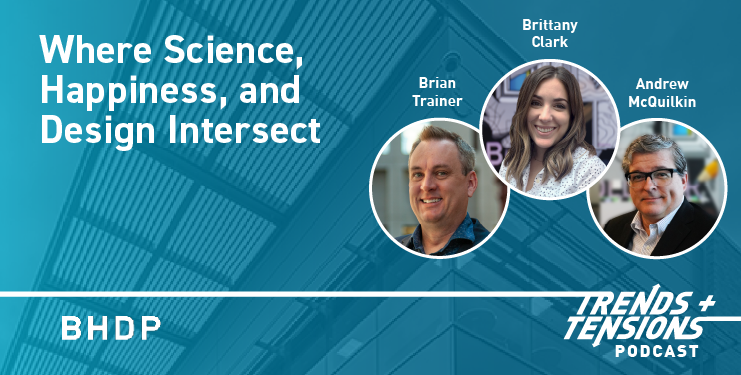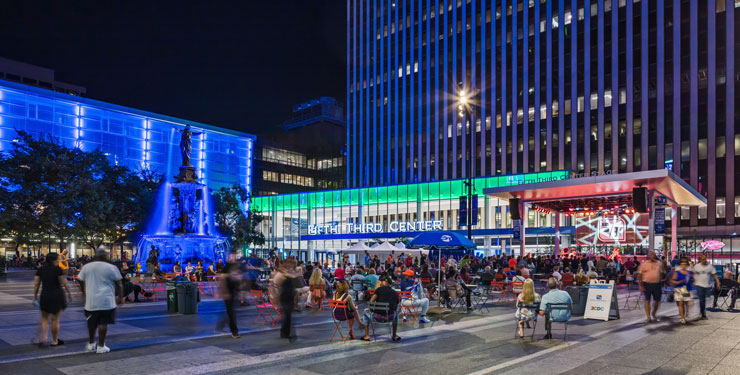
Creating A Happy Workplace: Business Environment Design Matters
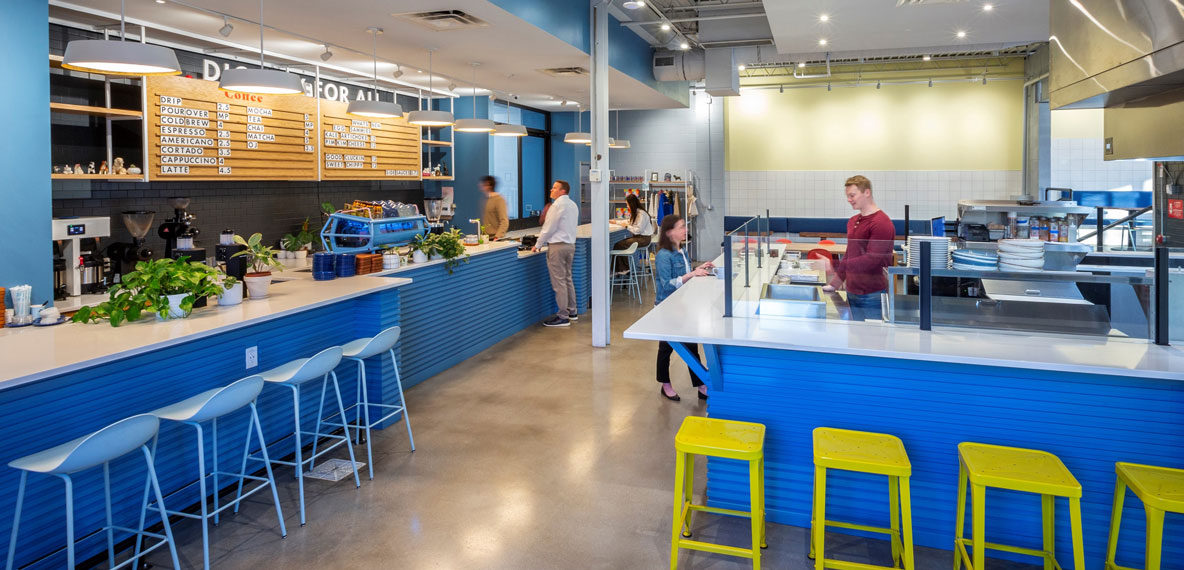
The great architect and engineer, Luis Barragan, famously said that “any work of architecture which does not express serenity is a mistake.”
In the corporate world, visionary leaders embrace this concept and understand that inspiring and keeping their people happy are critical ingredients for any organization to deliver on its strategic vision. Creating an environment that promotes employee happiness, engagement and well-being are more important than ever, especially for younger workers. Recent research shows that millennials experience higher rates of depression compared to other generations, while 12 percent of this age group has been diagnosed with anxiety disorder, more than double that of baby boomers.
There are planning and design solutions that help alleviate stress and anxiety, but taking a proactive planning and design approach that inspires happiness—designing for happiness—is essential. Research shows that having a happy workforce increases sales, improves productivity, and boosts the organization’s bottom line. Happy employees are also more likely to stay with their employers and stay engaged in their work. The right environment design—overall layout, individual workstations, and the equipment users depend on—plays a key role in spurring workers to be more efficient, productive, collaborative, innovative, and happier in their jobs. As such, designing a workplace that considers employee work preferences and supports them to be at their best will help the organization perform at its best as well.
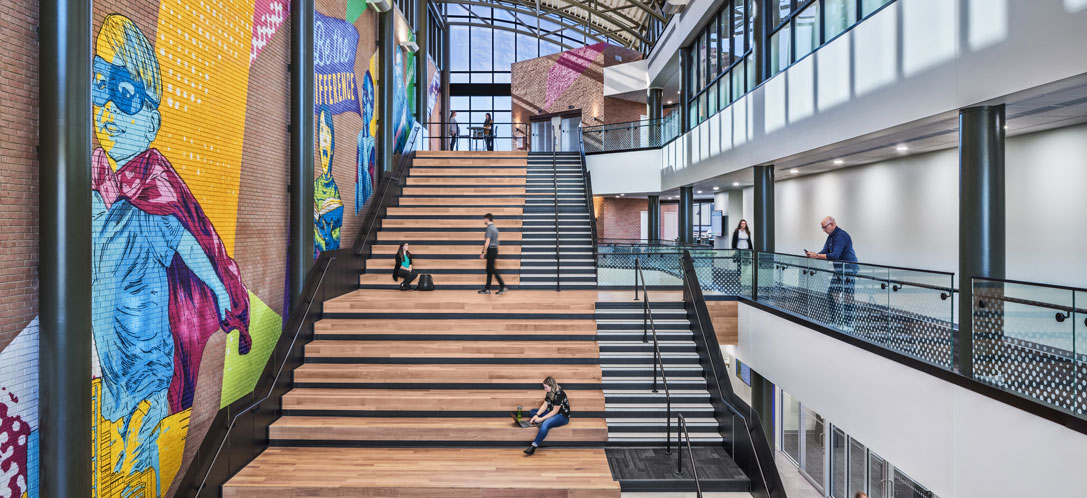
“Surprise and delight” features such as color-changing lights, unpredictable design elements, stairs, quiet rooms, and learning spaces can trigger the release of the “happiness” hormone dopamine.
Happiness Hormones and Sensorial Elements
The “designing for happiness” concept is rooted in four principles: surprise and delight, well-being, confidence, and inspiration—each of which generate the four “happiness hormones” that make users in a given space happier, healthier, and, in turn, more productive and successful.
As it pertains to design, surprise and delight is a design and marketing technique that attracts and nurtures users by offering positive experiences and unexpected rewards like gifts or one-of-a-kind events. Unexpected positive rewards build anticipation, which inspires happiness. Pavlov’s dogs likely represent the best-known example of the association between specific triggers and positive rewards. A 2018 study analyzed this concept in rats, confirming that the anticipation of a random positive act—food, in this case—released more dopamine than the initial first-time “surprise” of the food reward. Keeping reward events random keeps levels of dopamine elevated, while a set and predictable reward reduces dopamine release over time. From a design standpoint, Frank Lloyd Wright’s “compression and expansion” concept is an example of surprise and delight at work. Wright relied on the use of a purposely small space that leads into a smaller space, creating “a temporary sense of tension, followed by a powerful feeling of freedom.” Incorporating an element of surprise, a pleasurable delight, or an unpredictable design element can trigger happiness hormones.
The feeling generated by certain triggers—in this case design elements—releases dopamine, the hormone that connects feelings of pleasure to behavior to motivate action. The “happiness chemical” is activated in those who are anticipating an event or a positive feeling or outcome. Science calls dopamine the “reward chemical” because the hormone’s release is driven by reward-seeking behavior.
Design factors that trigger the release of dopamine can be as simple as including color-changing lights, for instance. The little jolt one gets when they see something bright and colorful is connected to the release of dopamine. In fact, color is critical and should always be considered for any space. For example, blue hues induce calm, while the color red provokes strong feelings that can be both positive and negative.
The senses play a key role in dopamine’s release, as they do in the emission of other happiness hormones. For example, incorporating haptic technology that stimulates the sense of touch triggers the release of dopamine, as do elements such as music and aromas that stimulate smell and taste. Designs that incorporate active spaces such as stairs, quiet rooms, and learning spaces also support the hormone’s release.
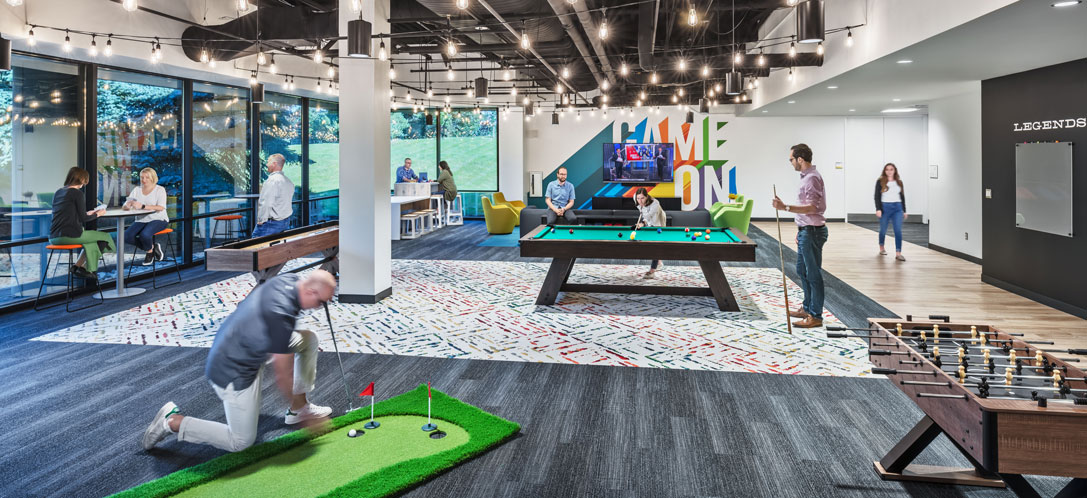
Environments that encourage social bonding, reduce stress, and increase feelings of calmness and security, boost the release of oxytocin, the hormone which helps to foster a sense of well-being.
Fostering Overall Well-Being
Well-being can be defined as the combination of feeling good and high functioning; the experience of positive emotions such as happiness and contentment as well as the development of one’s potential, having some control over one’s life, having a sense of purpose, and experiencing positive relationships. Creating welcoming environments emanate a sense of well-being, joy, commitment, and emotional connections in ways that traditional approaches tend to overlook. Underlying planning is a strong focus on the desires and needs of people for quiet and collaborative areas, learning spaces, and positive energy. Fostering community, engagement, and a sense of pride in an environment of beauty should always be overriding design factors.
Such environments boost the release of oxytocin, the “love and bonding hormone.” Oxytocin is the neurochemical that has allowed humans to become social creatures, and is responsible for the feeling of empathy, which makes us feel closer to others by encouraging social bonding during its release, reducing stress, increasing feelings of calmness and security, and, ultimately, fostering a sense of well-being. Design elements that spur the release of oxytocin include collaborative and open spaces, food amenities, emotional digital content, and biophilia (the connection to nature).
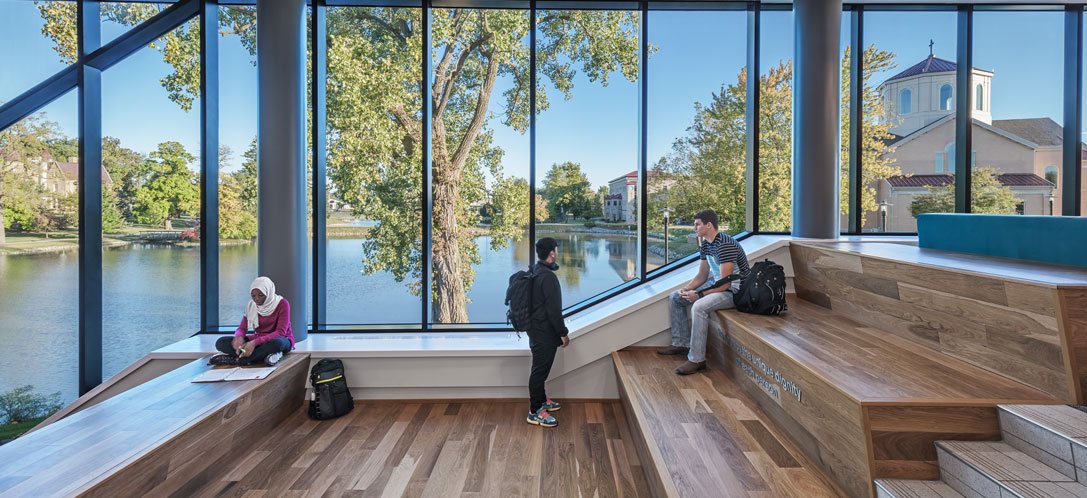
Space with natural light, outside access, photos, and images of positive experiences instigate the release of serotonin to promote employee confidence.
Building Confidence
The concept of confidence is fairly self-explanatory. It’s appreciation and assurance of one’s own abilities, qualities, skills, and strengths. Essentially, it’s the feeling that “I can” rather than “I can’t.” Serotonin is known as “the confidence molecule,” a neurochemical that regulates mood, good or bad. It is a regulator that plays a key role in the control and maintenance of homeostasis within the gut system, affecting physiological processes such as the absorption of nutrients, blood flow and the health of the immune system. Serotonin helps regulate body temperature as well as sleep and wakefulness, gut health, and hunger.
Physical activity releases serotonin, as does bright light, sunlight, foods with tryptophan, massage therapy, yoga, listening to calming music, looking at photos of loved ones, and happy memories. From a design standpoint, incorporating fitness centers and yoga spaces, considering light levels, creating area with plenty of natural light, offering outside access, and including photos or images of employees’ positive experiences help instigate the release of serotonin and promote more confident and productive users.
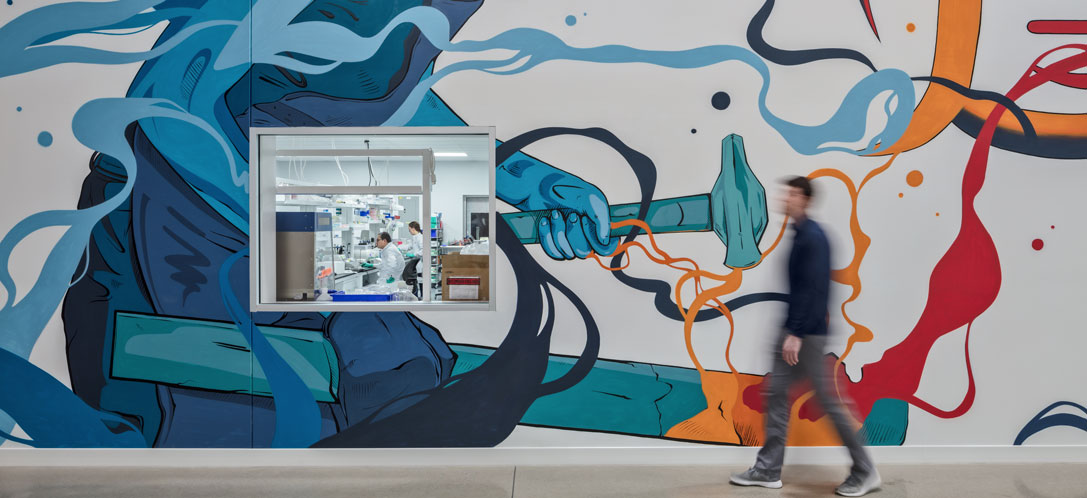
Physical environments include creative spaces, skylights, and colors such as calming blues or a bold red palette boost the production of endorphins and inspire users of the space to do or feel something meaningful.
Inspirational Design
Inspirational space design stimulates occupants to do or feel something meaningful. When a space is designed with users in mind, it invokes strong feelings or reactions, perhaps inspiring an idea for a new product or an innovative solution to a problem, for example. Such strong feelings are linked to the secretion of endorphins, the “feel-good” chemicals that the brain emits in the masking of pain or discomfort. The brain secretes endorphins, which function somewhat like opioids, as a response to pain or stress, but also during physical activity and eating. Endorphins promote memory and cognitive health, and support a healthy immune system while reducing pain, increasing pain thresholds and cognition, and easing depression, stress and anxiety.
Physical environments that boost the production of endorphins should include creative spaces, skylights, and attention to color, such as calming blues or a bold red palette, depending on the type of energy the space requires.
Ultimately, the biggest obstacle to designing for happiness is subjectivity. There is no universal way to collectively design for it. But understanding the vision and strategic goals of each project, along with the different and unique groups that use and engage with the new space, results in unique planning and design solutions. Businesses that recognize the importance of putting people at the center of their design plans will create powerful, strategically aligned user experiences, proactively marrying the organization’s strategic vision to the happiness of its people through purposeful design solutions.
This article was originally published by Work Design Magazine
Author
Content Type
Published Articles
Date
November 02, 2023
Market
Practice
Topic
Workplace Strategy


